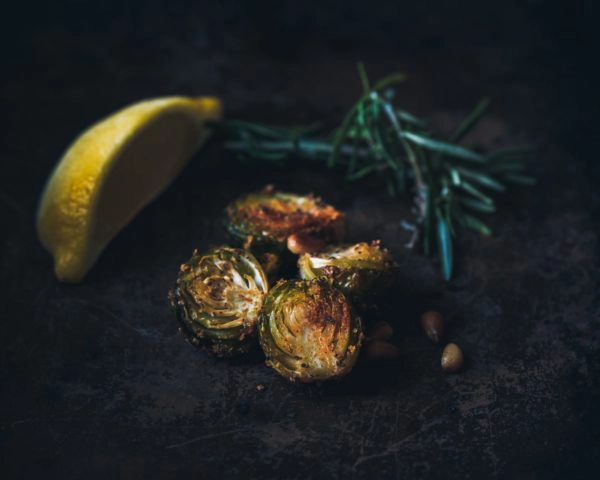Table of Contents[Hide][Show]
We’ve all heard of the winter blues—I’m not talkin’ the Billie Holiday kind—and we all get a little down sometimes: a bit sad, maybe a day with low energy.
But did you know that your blues can actually correspond to the season? Sounds a bit crazy, right? I mean, you’re not a deciduous tree losing its leaves in fall.
Yet, studies show that the “winter blues” or a more severe form called Seasonal Affective Disorder is not as rare as you might think. 4-6% of people in the U.S. suffer from Seasonal Affective Disorder with another 10-20% suffering from a milder form called “winter blues”—that equates to roughly over 20 million Americans, the majority of which are women.
What is Seasonal Affective Disorder?
Seasonal Affective Disorder (SAD) is a type of depression that corresponds directly to the fall and winter seasons, usually as a response to the shortened daylight hours. Symptoms typically begin in late fall or early winter and tend to last until the following summer.
Similar to other forms of depression, people with SAD may experience fatigue, anxiousness, sadness, anxiety, lethargy, or other like symptoms. You may find things that normally would make you happy, don’t have the same positive impact.
What causes SAD?
While it may seem like a cruel prank Mother Nature is playing on you, SAD and winter blues are likely the result of several factors. The disruption of melatonin and serotonin creates a biochemical imbalance in the brain triggered by lack of daylight hours and sun exposure.
“Some researchers have suggested that the lethargy characteristic of SAD may have an evolutionary basis: it may reflect a genetically programmed attempt to conserve energy during the winter months, which historically has been the time when food is scarce.”
In laymen’s terms, it’s your brain’s confused attempt at unnecessary hibernation.
What Can You Do?
For starters, you must pack all of your things and move to a tropical island of your preference and wear the most amazing straw hats all day. No? Not feasible? Fine. There are other approaches that are maybe less life-altering. (But they don’t sound nearly as fun!)
Actual treatments vary but can include medication, light therapy, talk therapy, or exercise. We strongly recommend that you consult with your doctor to find the right treatment for your individual needs.

7 Foods that Fight Winter Blues
That being said, there does seem to be a consensus that regardless of any additional treatments your physician may recommend, a healthy diet can help reduce or eliminate your SAD/winter blues symptoms. Make the kitchen your battleground and the food your weapon.
Here are 7 things you should include in your diet that are believed to lessen the severity of your symptoms:
1. Omega-3 Fatty Acids
These guys are no new kids on the block. Omega-3s have been touted for their beneficial health properties for awhile now. They are great for our joints, our brain and inflammation throughout your body.
how to get omega-3s
Studies have shown that there is a definitive link between Omega-3 deficiencies and depression, specifically in the form of SAD. Unfortunately, our body doesn’t produce Omega-3 fatty acids on its own, so we have to rely on obtaining them through consumption.
Oily fish such as salmon and anchovies are great sources, as well as flaxseed, walnuts and hemp.
2. Turkey
If you’ve ever had an amazing Thanksgiving dinner and then watched your family and friends fall asleep on the couch like a well set-up chain of dominos, this is because of an amino acid called tryptophan.
It is a natural calming and relaxing chemical that helps your body and mind deal with anxiety and stress, thus combatting these winter blues. “Tryptophan may even play a role in more effectively converting vitamin D to serotonin.”
3. Bananas
Why do you think monkeys seem so happy? Ok, that’s not based on any research I conducted, but it seems to make sense!
Like our friend Tom Turkey, bananas also contain tryptophan, that natural chemical that makes us calm and chill. They are also loaded with B6, potassium and magnesium, all powerful additions in your dietary army against SAD and winter blues.
These natural ingredients all have stress-reducing properties and help fight the symptoms associated with depression.
4. Dark Chocolate
Yes – chocolate can improve your mood! Dark chocolate is packed with antioxidants such as flavonoids and polyphenols that reduce stress-causing hormones.
Now, before you get too excited, let me clarify. Consuming Hershey bars by the pound is not going to be a prescription to better health. Studies suggest that consuming 1.5 oz of dark chocolate daily for a couple months can improve moods and benefit your mental health.
Unsweetened chocolate containing at least 75% cocoa… that’s what you’re looking for to reap the benefits of this. NOM NOM!
5. Folic Acid
Folic acid helps our bodies create a mood affecting neurotransmitter called serotonin. It’s one of the key nutrients that your body needs if you are pregnant or trying to conceive because it is so beneficial in healthy development.
It is contained in foods that are generally considered healthy for many other reasons, as well, so it creates a bit of a double win. Leafy greens, lentils, oranges, brussel sprouts and oatmeal are some of the foods that are rich in folic acid.
6. Good Carbs
Oh, carbs – you’ve gotten such a bad rap.
One symptom of SAD is the craving for carbohydrates, thought to be due to decreased serotonin. Carbohydrates are known to increase serotonin levels so you have that “feel-good” feeling. Still, you have to use caution in choosing the type of carbs you eat.
sub bad carbs for good
Those high in sugar like doughnuts, white rice and breads raise blood sugar and spike your insulin causing the fatigue and irritability associated with this sugar crash.
Choosing carbs like whole grains, lentils and brown rice can satisfy cravings, increase serotonin and avoid the unnecessary sugar crash. It has been suggested that about 30 grams of carbs, or 120 calories, per day is enough to make the necessary serotonin.
7. Vitamins
Call your mother and tell her she was right and you’re sorry you didn’t take your vitamins. And from here on out… Take your Flintstones.
what vitamins?
Vitamin deficiency can lead to all kinds of health problems, including depression. Vitamins B12 and D are especially important for people who suffer from SAD. These vitamins help to enhance your mood and provide overall wellness.
Some suggestions for including these vitamins in your meals include clams, eggs, yogurt, milk, mushrooms, or through the use of supplements—though if you’re considering taking a vitamin supplement, make sure you do your research on brands that are good for you.
The “winter blues” are no joke
Seasonal Affective Disorder and even “winter blues” are serious conditions that require professional treatment. However, there’s nothing wrong with supporting your doctor’s treatment plan with a well-balanced diet.
finding balance can help
Including these seven items into your daily diet is a good way to encourage your body and mind to stay in balance and healthy.
Taking the steps to care for yourself will help to keep your face smiling and your moods positive so you can enjoy that amazing crisp air and all the things that each season has to offer.
References:
Healthline
Eating Well
Food Network
One Green Planet
Dr. Weil



I start off the morning here in New Mexico walking with my 10 month old puppy, “Charlie”. Because we have sun almost non-stop here (thankfully!) we New Mexicans enjoy getting out in it! So… in the winter, even though it’s chilly in the mornings, it’s very invigorating to breathe the clear air and soak up some sunshine. We walk about 30 minutes (briskly) and I find I am pumped and ready to meet the day.